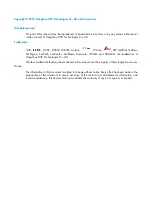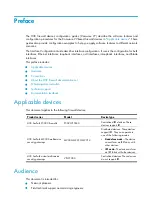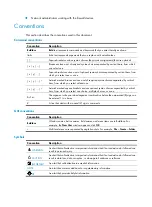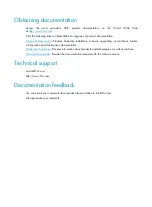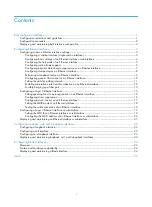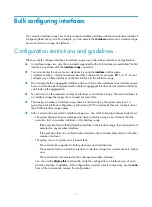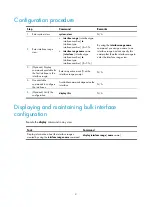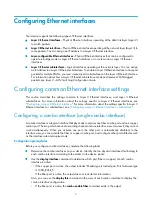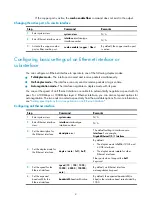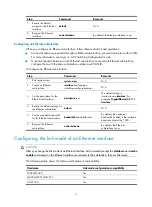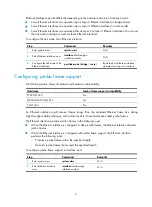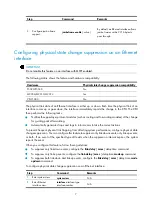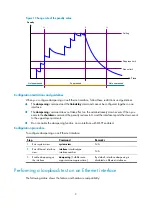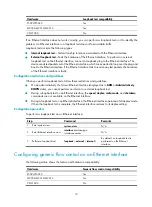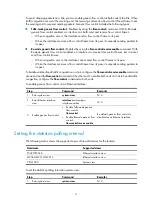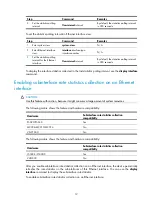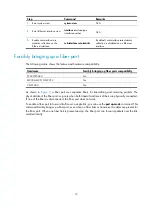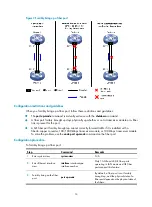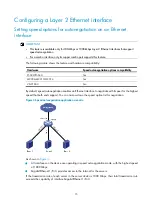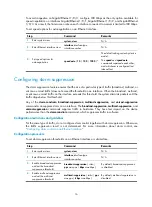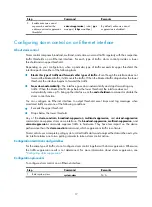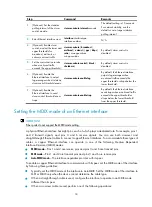
3
Configuring Ethernet interfaces
Your device supports the following types of Ethernet interfaces:
•
Layer 2 Ethernet interfaces
—Physical Ethernet interfaces operating at the data link layer (Layer 2)
to switch packets.
•
Layer 3 Ethernet interfaces
—Physical Ethernet interfaces operating at the network layer (Layer 3) to
route packets. You can assign an IP address to a Layer 3 Ethernet interface.
•
Layer-configurable Ethernet interfaces
—Physical Ethernet interfaces that can be configured to
operate in bridge mode as Layer 2 Ethernet interfaces or in route mode as Layer 3 Ethernet
interfaces.
•
Layer 3 Ethernet subinterfaces
—Logical interfaces operating at the network layer. You can assign
an IP address to a Layer 3 Ethernet subinterface. To enable a Layer 3 Ethernet interface to transport
packets for multiple VLANs, you must create Layer 3 subinterfaces on the Layer 3 Ethernet interface.
For information about how a Layer 3 Ethernet subinterface sends and receives VLAN-tagged
packets, see
Layer 2—LAN Switching Configuration Guide
.
Configuring common Ethernet interface settings
This section describes the settings common to Layer 3 Ethernet interfaces, and Layer 3 Ethernet
subinterfaces. For more information about the settings specific to Layer 2 Ethernet interfaces, see
"
Configuring a Layer 2 Ethernet interface
." For more information about the settings specific to Layer 3
Ethernet interfaces or subinterfaces, see "
Configuring a Layer 3 Ethernet interface or subinterface
Configuring a combo interface (single combo interface)
A combo interface is a logical interface that physically comprises one fiber combo port and one copper
combo port. The two ports share one forwarding channel and one interface view. As a result, they cannot
work simultaneously. When you activate one port, the other port is automatically disabled. In the
interface view, you can activate the fiber or copper combo port, and configure other port attributes such
as the interface rate and duplex mode.
Configuration prerequisites
Before you configure combo interfaces, complete the following tasks:
•
Determine the combo interfaces on your device. Identify the two physical interfaces that belong to
each combo interface according to the marks on the device panel.
•
Use the
display interface
command to determine which port (fiber or copper) of each combo
interface is active:
{
If the copper port is active, the output includes "Media type is twisted pair, Port hardware type
is 1000_BASE_T."
{
If the fiber port is active, the output does not include this information.
Also, you can use the
display this
command in the view of each combo interface to display the
combo interface configuration:
{
If the fiber port is active, the
combo enable fiber
command exists in the output.


